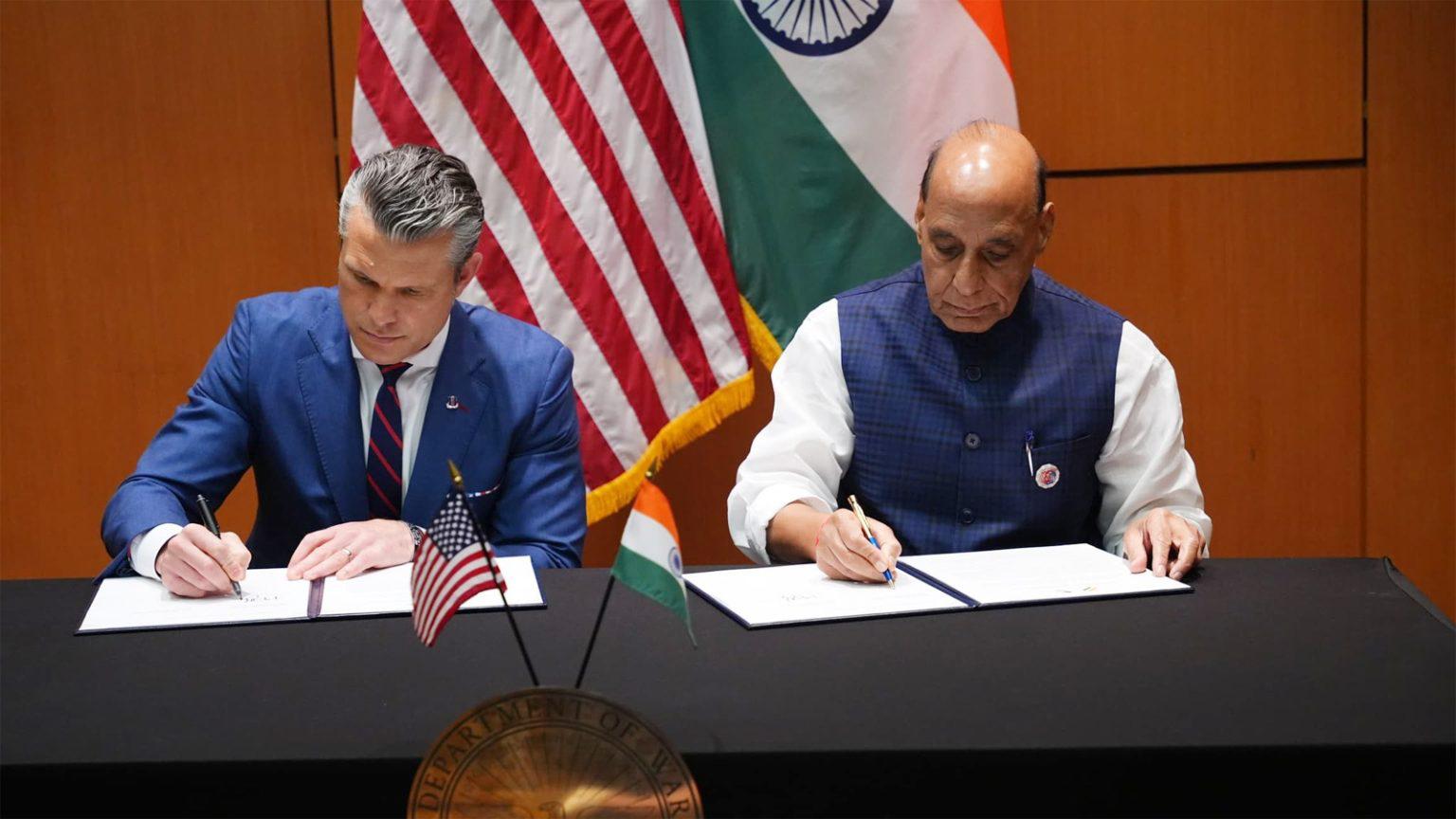
Washington, D.C. / New Delhi: The United States and India signed a significant ten-year defense framework agreement on Friday, aimed at enhancing military cooperation, technological collaboration, intelligence sharing and defense industry partnerships between the two nations. The agreement was finalized in Kuala Lumpur during the meeting of Southeast Asian defense chiefs, where U.S. Secretary of Defense Pete Hegseth and Indian Defense Minister Rajnath Singh signed the document.
Both leaders described the agreement as the beginning of a new era in bilateral relations. Pete Hegseth stated that the United States regards India as a reliable partner and this accord will provide a strong foundation for peace, stability and prosperity in the region. According to Indian Defense Minister Rajnath Singh, the agreement aligns with India’s “Make in India” vision of defense self-reliance and will enable the local defense industry to access world-class technology.
Defense analysts view the agreement as a sign of growing closeness between the U.S. and India, particularly at a time when China’s influence in the region is steadily expanding. Under the deal, both countries will be able to initiate joint military exercises, technology exchanges, and collaborative development of advanced defense systems.
This development comes at a time when Washington and New Delhi continue to face trade disagreements, yet both capitals are prioritizing defense cooperation. Observers say the U.S. sees India as a strong strategic ally in the Asian region, while India views this partnership as an opportunity to strengthen its global standing.
Analysts believe the true success of the agreement will depend on its practical implementation. If effectively carried out, the framework could mark a major turning point not only for both nations but also for the strategic balance of the region. However, some circles have expressed concern that India’s defense ties with Russia and U.S. trade measures could pose challenges to this partnership.
The agreement between the United States and India represents a new direction in mutual trust and strategic collaboration, one that could have far-reaching implications for Asian geopolitics and the region’s defense balance in the years to come.


